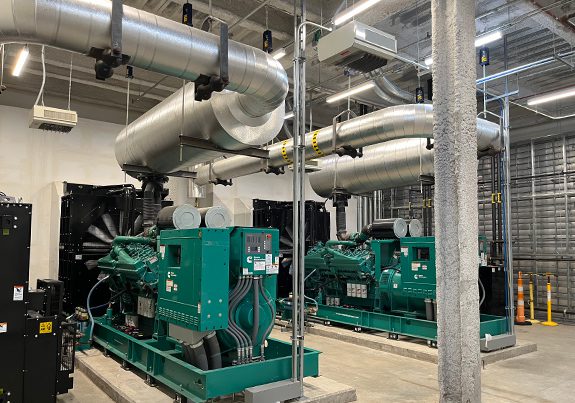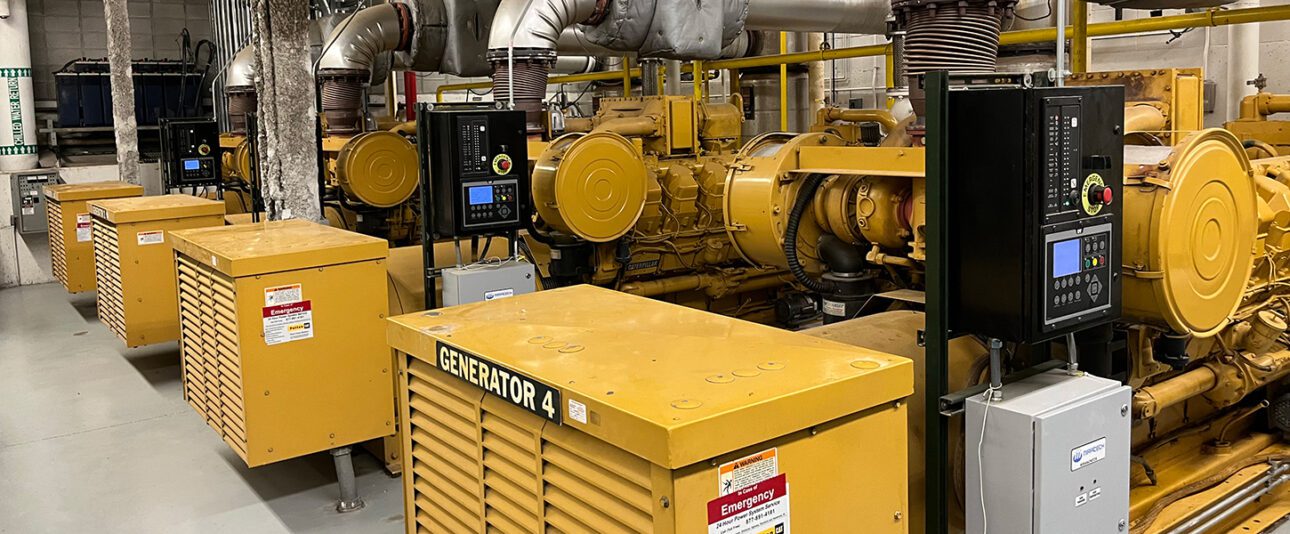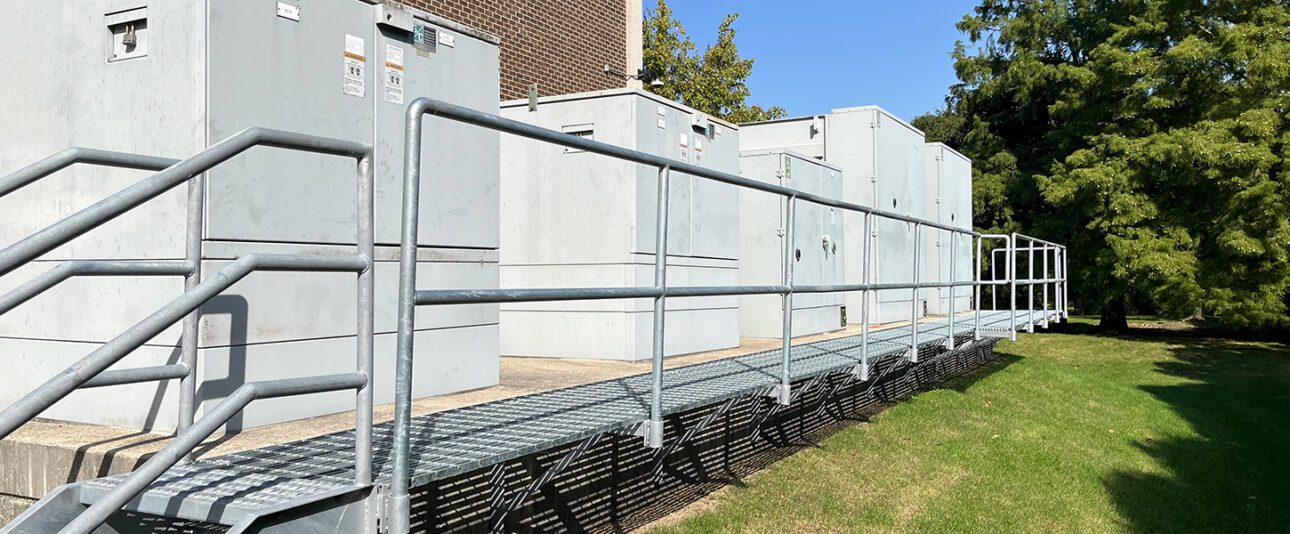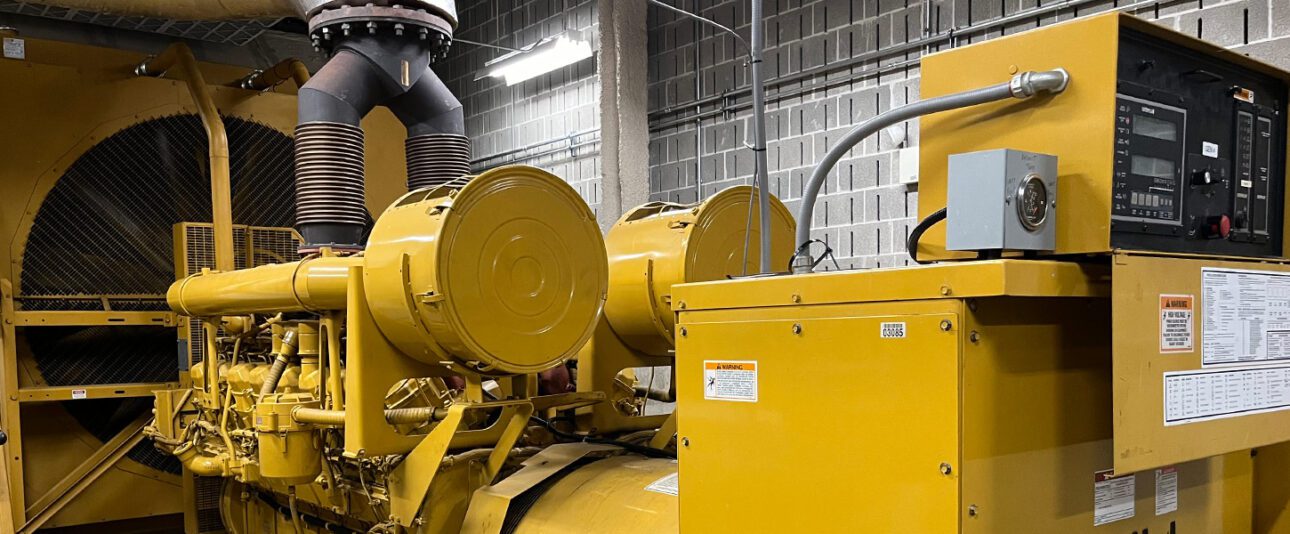In summer 2024, a generator failure at a Northwestern Medicine hospital underscored the importance of reliable emergency power. GBA was hired to assess the emergency power systems at 19 hospitals and outpatient treatment centers. The resulting report analyzed the capacity, redundancy, and reliability of the systems, revealing several common themes:
- Single points of failure: Facilities with one generator, or multiple generators without paralleling capabilities. Some facilities also lacked the code-required rental generator tap boxes.
- Air intake and exhaust reliability issues.
- Code compliance issues (not all of which directly impacted resilience).
- Supplier service and support challenges: Issues were reported with difficulty obtaining parts, service, information, and timely responses from the system’s critical components provider. The report suggested that a more coordinated system-wide supplier communication strategy could be beneficial.
- Expanding emergency power needs: As facilities plan to add more central plant equipment (cooling, AHUs), absence of accurate data documenting total connected load impedes the facilities’ ability to estimate spare capacity or the need for connecting additional critical loads.
- Power quality issues, including voltage sags and surges, and the need for more proactive engagement with the electrical utility.
The analysis grouped the surveyed facilities into Group A (seven facilities), which have appropriate generators and reliable auxiliary systems; Group B (seven facilities), which lack appropriate backup; and Group C (five facilities), deemed the most vulnerable to blackouts from a single generator failure. Details about each facility were provided, including generators, generator rooms and infrastructure, automatic transfer switches, outdoor and indoor fuel oil storage tanks, and indoor fuel distribution. System diagrams, site plans, assessment tables, and photos were also provided for each facility analyzed. The report enabled development of a prioritized, multi-year capital plan to address identified gaps and limitations. A separate five-year infrastructure capital plan provided detailed recommendations for emergency power system upgrades and replacements.






